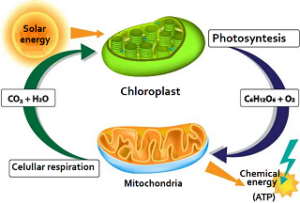
The first aortic mutation
How exactly life originated is still speculation, one of the most  elaborate theories was made by Lynn Margulis (1938-2011) Carl Sagan’s first wife, he is famous for the Cosmos series, her theory called Endosymbiosis.
elaborate theories was made by Lynn Margulis (1938-2011) Carl Sagan’s first wife, he is famous for the Cosmos series, her theory called Endosymbiosis.
In this theory the mitochondria and chloroplasts become organelles in a cell, the first by chemical energy and the second by photosynthesis, although the theory has never been proven in the laboratory is interesting, Teilhard Chardin called them “chain of carbon molecules” (The phenomenon human) and ATP (adenosine triphosphate) energy-carrying molecule in living beings, there are other theories of course.
Fundamentalists on duty stay calm, also in the Genesis of the Bible is that God made man out of clay and then blew him in the nostrils, so life also appeared at a certain moment (Genesis 2,7), and the previous text says that “but a steam was rising from the earth to water the whole earth ”(Gn 2,6), that steam could well be CO2.
We may never know exactly how this happened, but it is certain that Earth and Nature came before living organisms and certainly after them (or most of them) man appeared, but the aortic mutation did not stop there.
Genetic mutations, although rare can happen, they can cause new genes to appear in a given population, by natural adaptation mechanisms, if certain characteristics are favorable to survival and reproduction in a certain environment, therefore if the environment changes, the mutations can become stable in the new environment.
The land has undergone several environmental changes, and perhaps what we are going through is the one that most deeply affects the stability of the environment, birds and animals have been extinct and forests and natural environments have been devastated, so it is to be expected that some mutation will occur, but it will be the environment is the first to change and react, so natural phenomena can occur.
This takes many years to occur, but suddenly they break in a chain of mutations, as Teilhard Chardin describes it: “the irresistible developments that are hidden in the most sluggish slowness, – the extreme agitation that is hidden under a veil of rest, – the entirely new that insinuates itself within the monotonous repetition of the same things ”(Chardin, 1965, p. 8).
In times of pandemic risks, looking at the universe of cosmogenesis we live in is essential.
CHARDIN, T. (1965). O fenômeno humano (Human Phonomenon) BR, São Paulo : Herder.









